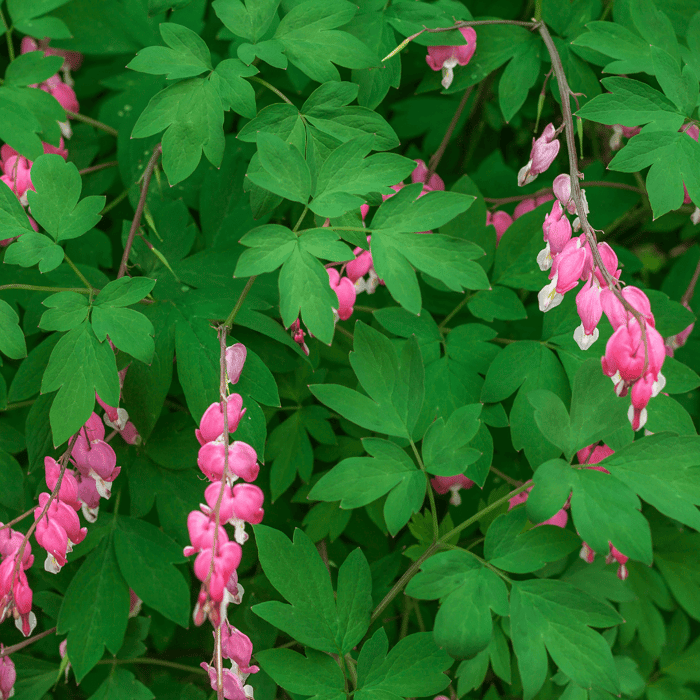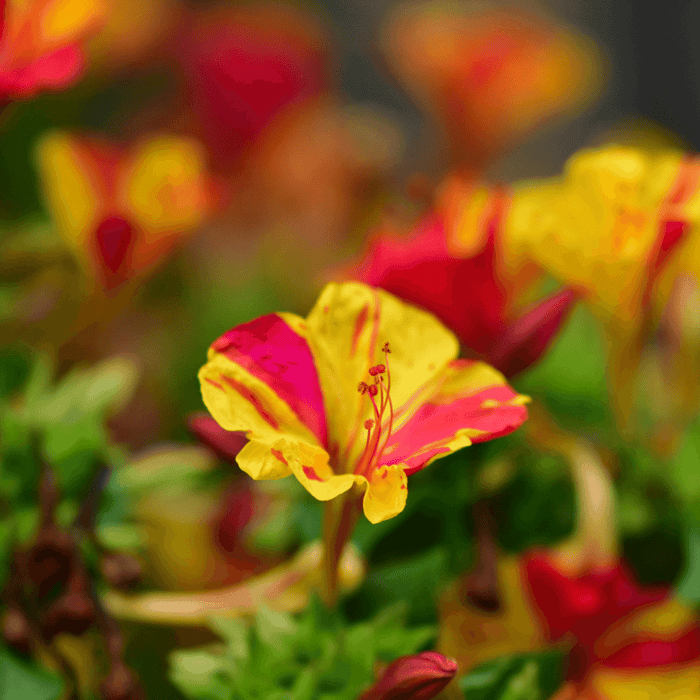Many people think of bright and sunny landscapes filled with vibrant blooms when gardening. However, not all gardens receive abundant sunshine. In fact, some garden spaces are shaded by trees, buildings, or fences for most of the day. It's important to know some plants and flowers that grow in the shade for these shady spots in your yard.
But just because a garden is in the shade doesn't mean it can't be beautiful and full of life. Shade-loving flowers are perfect for creating a flourishing garden even when sunlight is limited.
The Importance of Shade-Loving Flowers
Shade-loving flowers are vital for adding color and texture to areas without sun exposure. They provide a way to transform dark corners into stunning spectacles of nature's beauty. Shade-loving flowers also help create habitats for beneficial wildlife, such as birds, bees, and butterflies that require shelter from the sun's strong rays.
Furthermore, planting shade-loving flowers helps conserve water since they require less watering than sun-loving varieties. This makes them ideal for regions where water is scarce or during drought. Many of these shade-loving plants can be grown from flower seed packets too, saving you lots of money. A seed garden doesn't always have to be in the sun or vegetables. It can be shade-loving flowers too.
Wildflower, Perennial, & Annual Flower Seed Kit | 35 Variety Pack
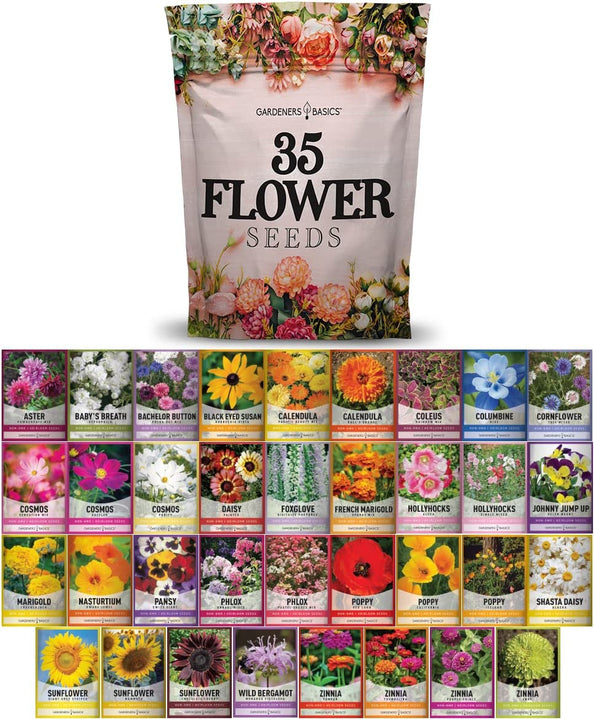
$29.95
$49.95
35 Flower Seeds Variety Pack – Heirloom, Non-Hybrid, Non-GMO, Open-Pollinated – Perfect for Pollinator-Friendly Gardens Transform your garden with our 35 Flower Seeds Variety Pack, offering a stunning and diverse selection of heirloom, non-hybrid, and non-GMO seeds. Each variety in… read more
Overview of 8 Shade-Loving Flowers
Now that we've established why shade-loving flowers are so important, let's dive into the 8 varieties we will be discussing in this article:
Each flower on this list has unique characteristics that make them suitable for shady gardens or landscapes with limited sun exposure.
So whether you're looking to add some color to an area without much light or simply want to experiment with new varieties, these shade-loving flowers will impress. Let's look at each one of the flowers that grow in the shade and discover what makes them so special.
Impatients

The Shade-Loving Flowers That Bloom All Summer Long
If you're looking for a shade-loving flower that blooms all summer, look no further than impatiens. These colorful annuals are a staple in many gardens and for a good reason. Not only do they provide bright pops of color against a shady backdrop, but they're also easy to care for and come in various hues to suit any taste.
Description and Characteristics of Impatiens
Impatiens are known for their brightly colored flowers and lush green foliage. They typically grow 6-12 inches tall, making them the perfect choice for borders or container gardens. Their leaves are oval-shaped with toothed edges, and their flowers come in shades of pink, red, orange, purple, white, and more.
One unique characteristic of impatiens is how they release seeds when touched or disturbed. This mechanism has given them the nickname "touch-me-not." They also prefer moist soil conditions and can wilt quickly if they don't receive enough water.
Varieties and Colors Available
There are several varieties of impatiens available on the market today. The standard or garden impatients (impatiens walleriana) is the most common type. Still, New Guinea impatiens (impatiens hawkeri) have larger flowers and can tolerate more sun than their garden counterparts. When it comes to colors, impatiens genuinely come in every shade imaginable.
You can find them in bold pinks, vivid oranges, rich purples, soft yellows, crisp whites - even bi-colored options! With so many choices available, creating a stunning display with this versatile plant is easy.
Growing Tips for Impatiens in the Shade
Impatiens are an easy-to-care-for plant that thrives in shady conditions. When planting impatiens, choose a spot with well-draining soil that stays consistently moist. Adding organic matter like compost or leaf mold improves soil quality.
Watering is key with impatiens. They need consistent moisture to thrive, but be careful not to overwater them, which can lead to root rot.
Mulching around the plants can help retain moisture. Another important factor for growing impatiens in the shade is fertilization.
Use a balanced fertilizer every 2-3 weeks during the growing season to keep your plants healthy and blooming. Be aware of pests and diseases commonly affecting impatiens, such as spider mites and downy mildew.
Regularly inspect your plants for signs of trouble and take action quickly if you notice any issues. With proper care, your impatiens will provide months of colorful blooms in even the shadiest parts of your garden.
The Beauty of Begonias
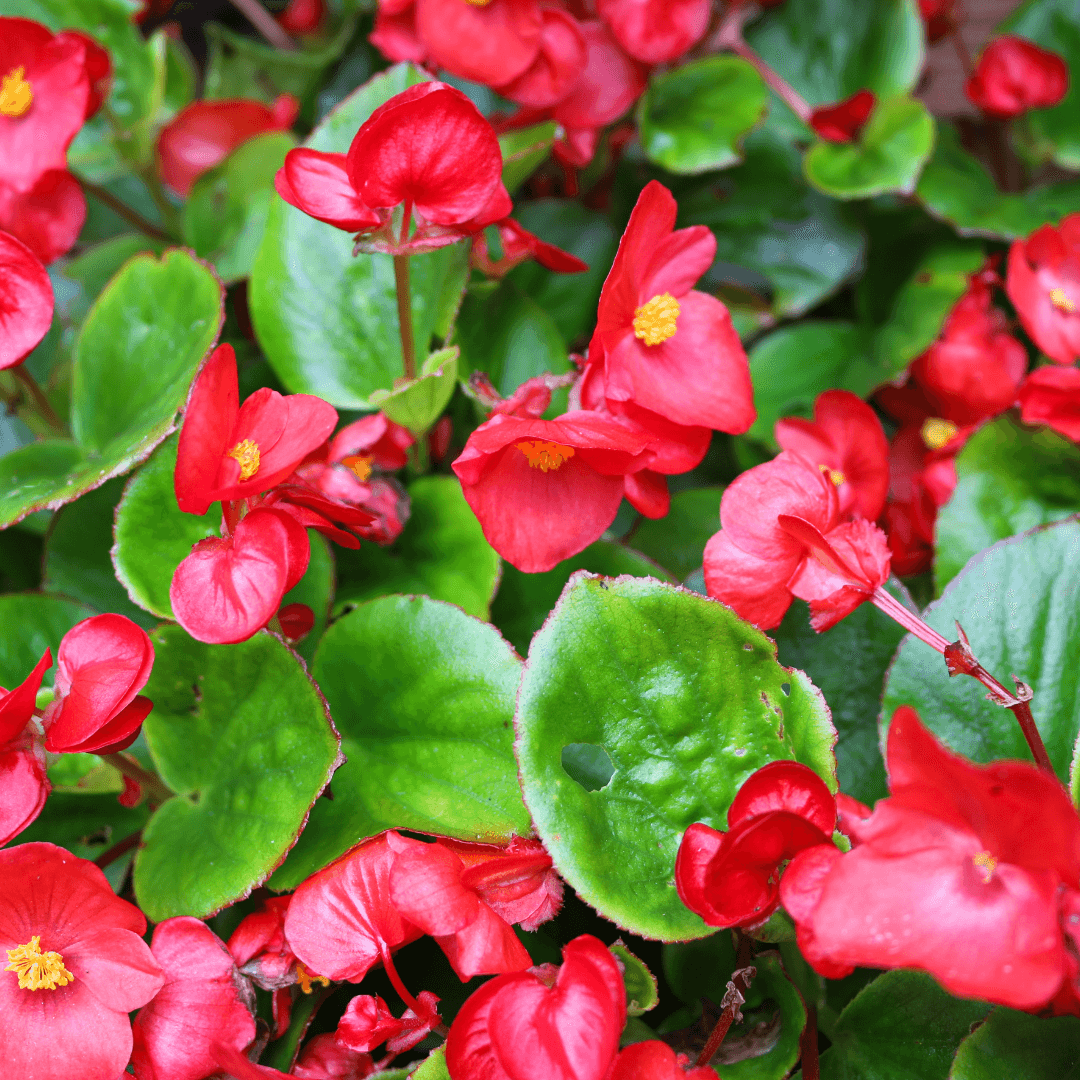
Begonias are a popular shade-loving flower that can add color and texture to any garden. These beautiful plants come in various colors, shapes, and sizes, making them a versatile addition to any garden. Whether you're looking for something to brighten up a shaded area or add some interest to your existing garden, begonias are an excellent choice.
Description and Characteristics of Begonias
Begonias are known for their stunning foliage, which can come in shades of green, pink, red, and silver. Some varieties also produce colorful blooms that range from pure white to deep pink or red. The leaves of the begonia plant can be either round or pointed and may have a glossy or matte finish depending on the variety.
One thing that sets begonias apart from other shade-loving flowers is their ability to thrive in partial and full shade conditions. They are easy to care for and require minimal maintenance once established.
Varieties and Colors Available
Numerous varieties of begonia plants are available on the market today, each with its unique set of characteristics. Some popular types include tuberous begonias, fibrous begonias, rhizomatous begonias, rex begonias, angel wing begonias, and cane-like begonias.
The colors available for this beautiful flower include white, pink, and yellow-red, among others, giving you quite some options when deciding what would suit your garden best, as it enhances its appearance. With so many different types available at nurseries or online retailers today, there's sure something perfect for every gardener!
Growing Tips for Begonias in the Shade
When planting your new shade-loving plants, note that they need well-draining soil with a pH range of 5.5-6.5, which is slightly acidic. They also require consistent moisture, so watering them regularly - especially during dry spells is important. Begonias prefer partial shade to full shade conditions, meaning they should be planted in an area that gets no more than four hours of direct sunlight daily.
Too much sun can cause the leaves to burn and the flowers to wilt. You must also add fertilizer regularly, as this will help the plants grow healthy and strong; use a slow-release formula explicitly designed for begonias to ensure optimal growth.
Begonias are an excellent choice for a beautiful, low-maintenance plant that can handle shade conditions without issue. With their wide variety of colors and shapes available, there is surely something that suits every gardener out there!
Bleeding Hearts: A Symbol of Love and Beauty in the Shade

When it comes to shade-loving flowers, one that immediately comes to mind is the bleeding heart. Its unique shape, coupled with its long blossoming period, makes it a popular choice for gardeners. Though it grows well in partial to full shade, bleeding hearts require specific growing conditions to thrive.
Description and Characteristics of Bleeding Hearts
Bleeding hearts are herbaceous perennials that grow from tuberous roots. The plant features long stems that bear delicate heart-shaped flowers in pink, white, and red shades.
The flowers have a unique appearance - they hang down from the stem and have a characteristic "bleeding" appearance at the bottom. In addition to their striking appearance, bleeding hearts are relatively easy to care for.
They prefer moist soil with good drainage and can thrive in partial or full shade. A mature plant can reach up to two feet in height and width.
Varieties and Colors Available
There are several varieties of bleeding hearts available on the market today. One popular variety is 'Valentine,' with bright red blooms appearing earlier in the season than other varieties.
Another variety is 'Gold Heart,' which boasts golden yellow foliage that stands out against its pink or white blooms. Other lesser-known but equally beautiful varieties include 'King of Hearts,' 'Luxuriant,' and 'Alba.' These varieties come in shades ranging from deep pink to pure white.
Growing Tips for Bleeding Hearts in the Shade
For those interested in growing bleeding hearts, there are some essential tips to remember. First, as previously mentioned, these plants prefer moist soil with good drainage.
This means ensuring proper watering habits - enough water without over-saturating the soil. Secondly, while they enjoy shade, it is important to find the right shade.
Bleeding hearts prefer a dappled shade, meaning they can get some direct sunlight but are protected by tree cover or other structures. When it comes to pruning bleeding hearts, it's important to do so after the plant has finished flowering.
This will help encourage new growth and ensure a healthy plant for years. Bleeding hearts are a beautiful and romantic addition to any garden.
With their unique shape and long bloom time, they are sure to catch the eye of visitors and passersby alike. While they require specific growing conditions, these plants can thrive for years with proper care.
Hostas: The Shade-Loving Greenery
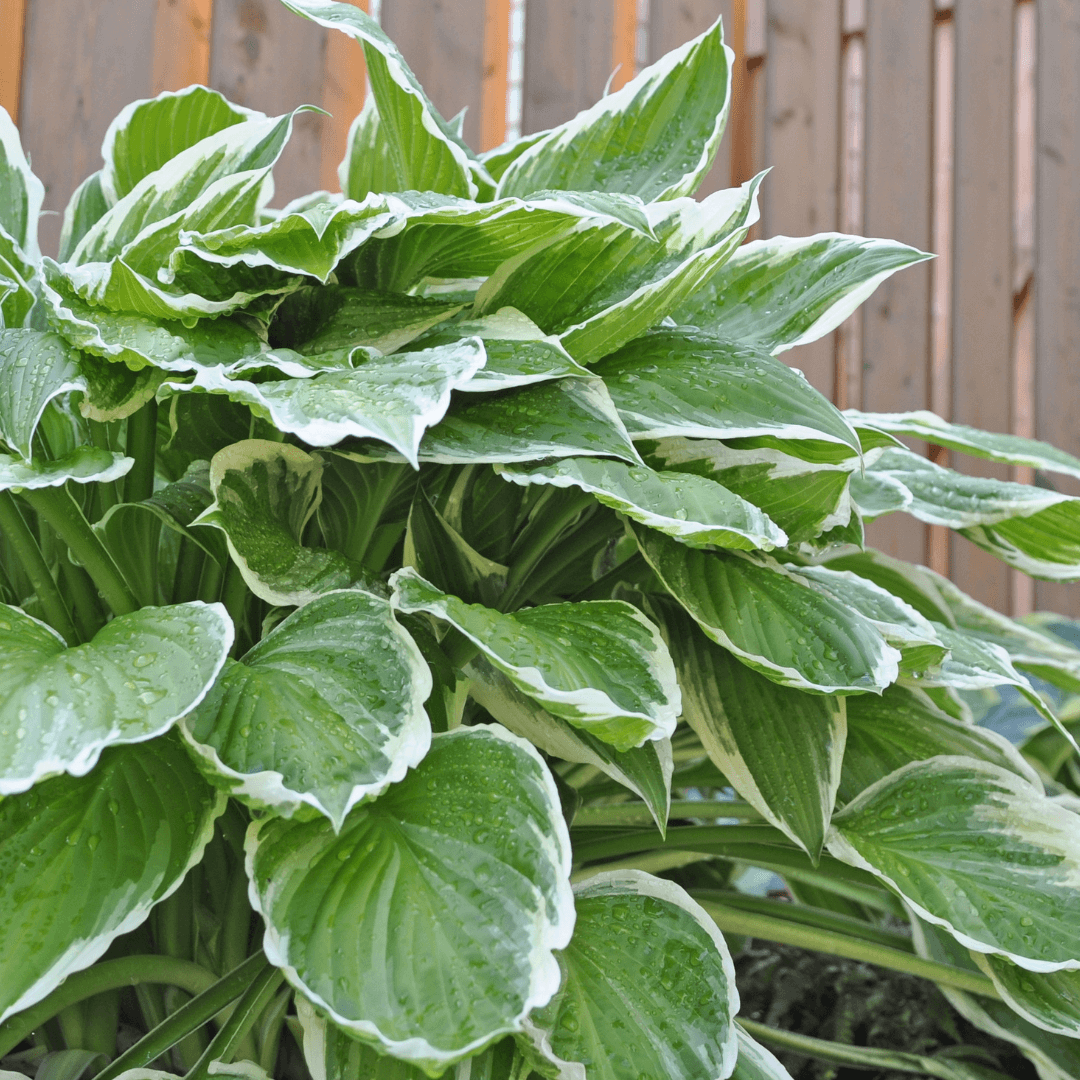
Hostas are a staple in shade gardens and for good reason. These plants sport lush green foliage that can provide a beautiful backdrop to the colorful flowers that grow in the same area. Hostas come in various sizes and shapes, meaning there is a hosta for every garden.
Description and Characteristics of Hostas
Hostas are herbaceous perennial plants that are native to Asia. They typically have large, heart-shaped leaves ranging from bright green to blue-green or even variegated with yellow or white splotches.
Hostas do not produce showy flowers like many other shade-loving plants but make up for it with their stunning foliage. One characteristic of hosta plants is that they can grow quite large.
Depending on the variety, hostas can reach anywhere from 6 inches to over 4 feet tall. Most hosta plants prefer moist soil conditions and thrive in areas with consistent moisture levels.
Varieties and Colors Available
Hundreds of hosta varieties are available today, each with its unique size, shape, and coloration. Some popular types include 'Sum and Substance,' which has enormous golden leaves; 'Blue Angel,' which boasts large blue-green leaves; and 'Patriot,' which has dark green leaves with white edges.
In addition to these standard varieties, mini hostas are available for those who want smaller versions of these shade-loving plants. These mini hostas grow only about 6 inches tall at full maturity.
Growing Tips for Hostas in the Shade
When planting hostas in your shade garden, choosing an appropriate location where they will receive adequate moisture but not too much direct sun exposure is essential. These plants prefer rich and well-draining soil, so you may need to amend your soil with compost or other organic matter before planting.
Hostas can also benefit from regular fertilization. You can use a slow-release fertilizer in the spring to give your plants the nutrients they need to thrive throughout the growing season.
Hostas are relatively low-maintenance plants but keep an eye out for pests like slugs and snails, which can damage the leaves. Hostas are an excellent choice for gardeners who want lush greenery in their shade gardens.
With hundreds of varieties available, you will surely find a hosta that fits your unique garden vision. Just remember to plant them in an appropriate location and care for their needs to ensure they thrive in your garden for years.
The Graceful Beauty of Astilbe
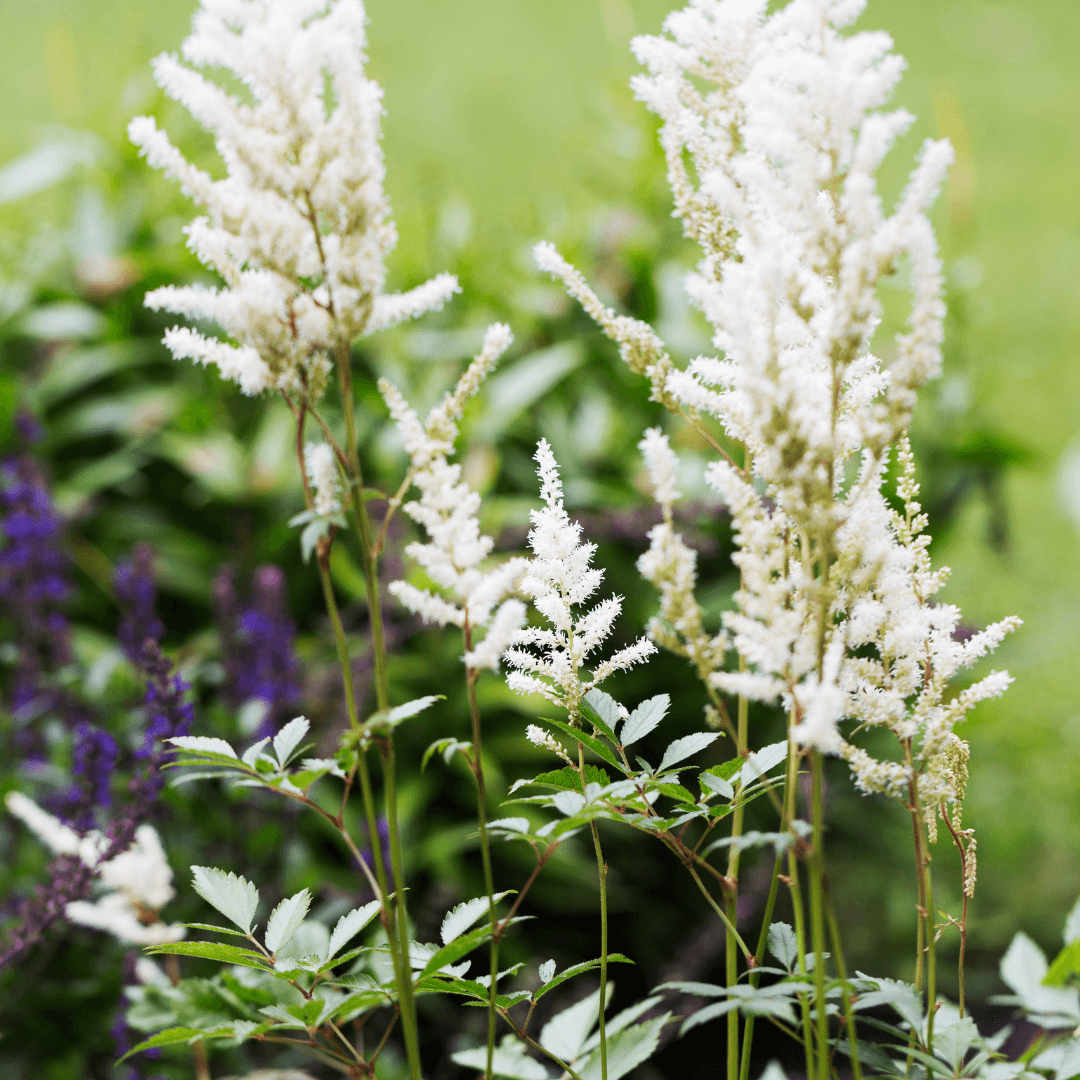
Astilbe is a beautiful perennial that is well-suited for shady gardens. Its graceful plumes of flowers come in various colors, from white and pink to red and purple.
Astilbe plants have feathery foliage that looks great even when not in bloom. They grow in clumps reaching 3 feet tall, making them perfect for adding vertical interest to garden beds.
Description and Characteristics of Astilbe
Astilbe is a genus of about 18 species of herbaceous perennials in the family Saxifragaceae. The plants are native to Asia and North America and commonly grow along streams or in moist woodlands. The leaves are dark green and glossy, with a serrated edge.
The flowers bloom on tall spikes above the foliage, creating an attractive display. One characteristic that makes astilbes popular among gardeners is their adaptability to different soil conditions.
They prefer moist, well-drained soil but can tolerate dry soil once established. They do best in partial shade but can handle full sun with enough water.
Varieties, Colors & Growing Patterns
Astilbes come in various colors: white, pink, red, lavender, and purple. There are also many cultivars available with different flower shapes and sizes. Some popular varieties include 'Fanal,' which has dark red flowers; 'Bridal Veil,' which has white flowers; 'Peach Blossom,' which has soft pink flowers; and 'Sprite,' which has light pink flowers.
Astilbes typically bloom from late spring to mid-summer, depending on the variety. They don't like hot weather, so keeping them well watered during the summer is important.
Growing Tips for Astilbe in the Shade
When planting astilbes, give them enough space to spread out. Plant them 12-18 inches apart and water them well after planting. Astilbes prefer soil rich in organic matter, so adding compost or aged manure to the soil before planting will help them thrive.
Astilbes do best in partial shade with morning sun and afternoon shade. If you have a spot that gets full shade all day, try planting white or light-colored varieties, as they will reflect more light and still look beautiful.
One thing to remember when growing astilbe is that they are heavy feeders. Fertilize them with a balanced fertilizer in the spring and again after flowering.
You can also top dress with compost or aged manure to add nutrients throughout the growing season. Astilbe is a beautiful perennial that adds grace and elegance to any garden bed.
With its wide range of colors and adaptability to different soil conditions, it's no wonder it's a popular choice among gardeners. By following these simple growing tips, you can enjoy the beauty of astilbe in your own shady garden for years to come.
Columbine: The Graceful Shade Lover
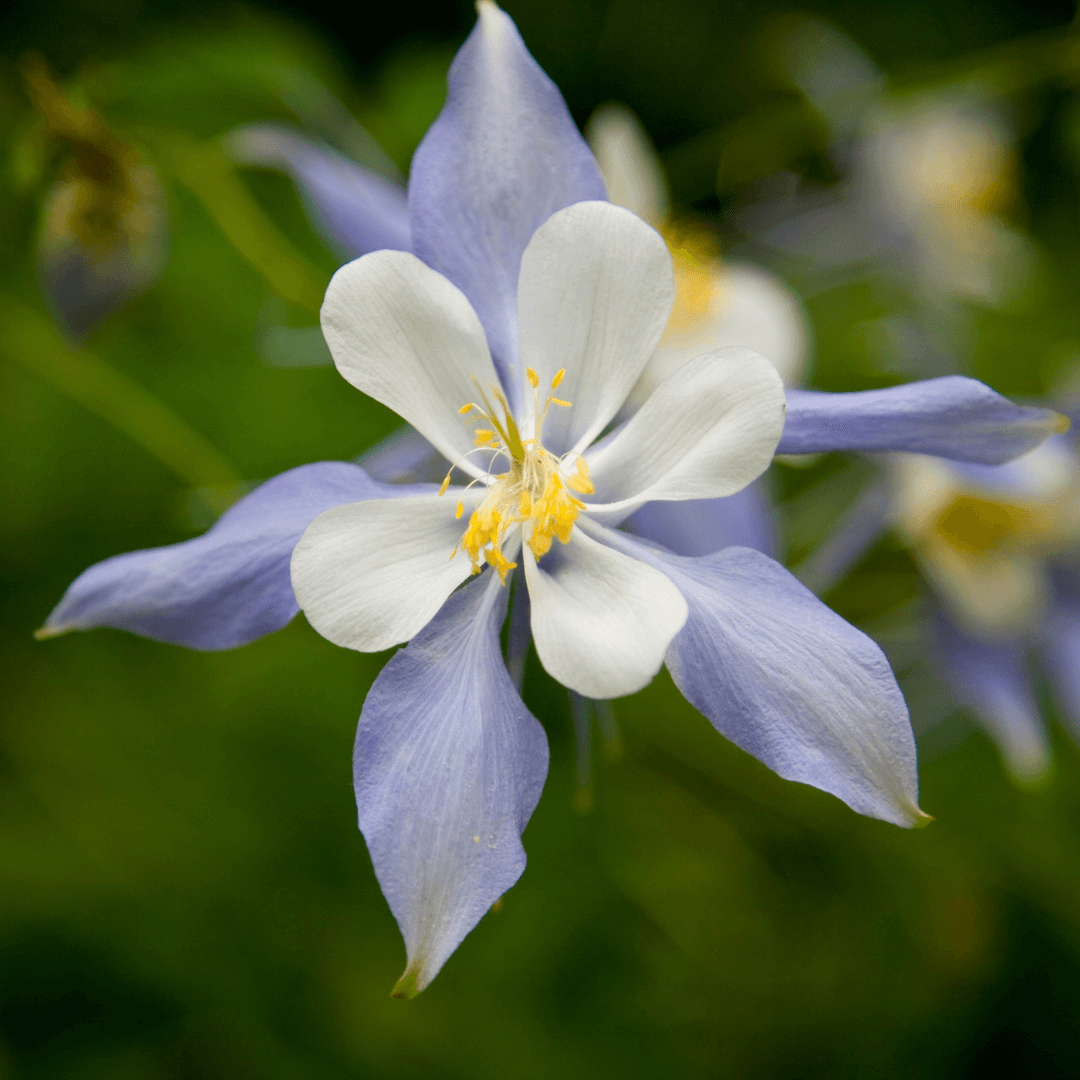
Columbines are known for their unique and intricate blooms, making them a standout in any garden.
They come in various colors, including purple, pink, yellow, white, and even bi-colored varieties. Columbines also have an exciting growth pattern, with long stems and delicate foliage that gracefully sways in the breeze.
Description & Characteristics of Columbines
Columbine (Aquilegia) is a genus of about 60-70 perennial plants native to North America.
They are part of the Ranunculaceae family and can grow up to 2 feet tall. Columbine flowers typically bloom from late spring to early summer, attracting hummingbirds and butterflies with their nectar.
One unique feature of columbines is their spurred petals that resemble little horns or spurs sticking out from behind the flower head. These spurs provide a landing platform for bees and other pollinators.
Blue Columbine Seeds
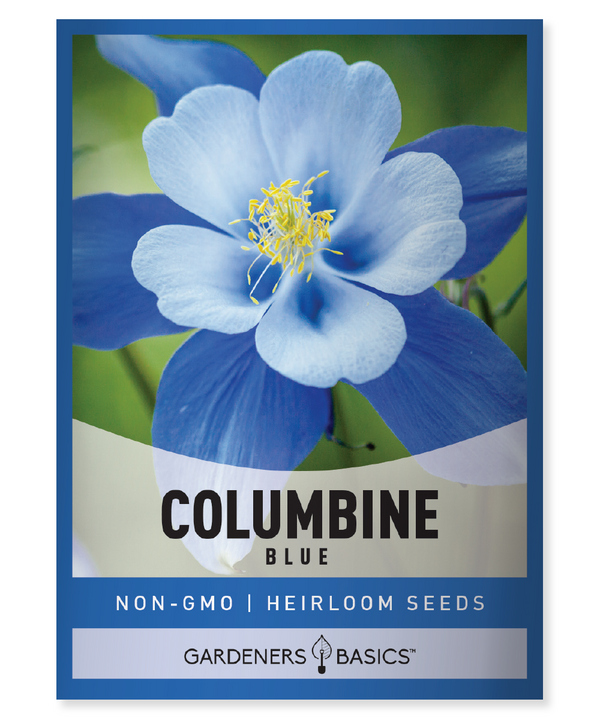
$2.49
Blue Columbine Seeds - Heirloom, Non-GMO, Non-Hybrid, Open-Pollinated Flower Seeds Enhance your garden with our premium Blue Columbine seeds, perfect for adding elegance and charm to any landscape. These heirloom, non-GMO, non-hybrid, and open-pollinated seeds are meticulously selected to ensure… read more
Varieties, Colors & Growing Patterns
There are many species and cultivars of columbine available to gardeners today.
Some popular cultivars include 'Blue Star,' which has deep blue columbine flowers with white centers; 'Denver Gold,' which has large yellow blooms; 'Winky Double Red & White,' which sports double red-and-white flowers; and 'William Guiness,' which features deep purple-black flowers accented by white centers. Columbines come in short-stemmed (6-8 inches) and tall-stemmed (24-36 inches) varieties, so they can be planted as a border plant or as an accent plant in the back of a garden bed.
They prefer well-drained soil with plenty of organic matter mixed in. Columbines thrive in partial shade or full sun conditions but need protection from the hot afternoon sun during summer.
Growing Tips
If you want to grow Columbine successfully, there are a few things to keep in mind.
First, make sure the soil is well-drained and has plenty of organic matter mixed in. Second, protect columbines from the hot afternoon sun during the summer months by planting them in partial shade or providing some other shade.
Columbines also benefit from regular watering, especially during dry spells. Consider mulching around the base of the plant to help retain moisture and prevent weeds from taking over.
Consider adding columbines if you want to attract hummingbirds and pollinators to your garden. The unique flower shape and bright colors will catch their attention and provide a valuable food source for these important creatures.
Columbine is a beautiful addition to any shade garden due to its delicate foliage, intricate blooms, and unique growth pattern. This graceful plant can thrive in your garden with proper care and attention for years.
Foxglove
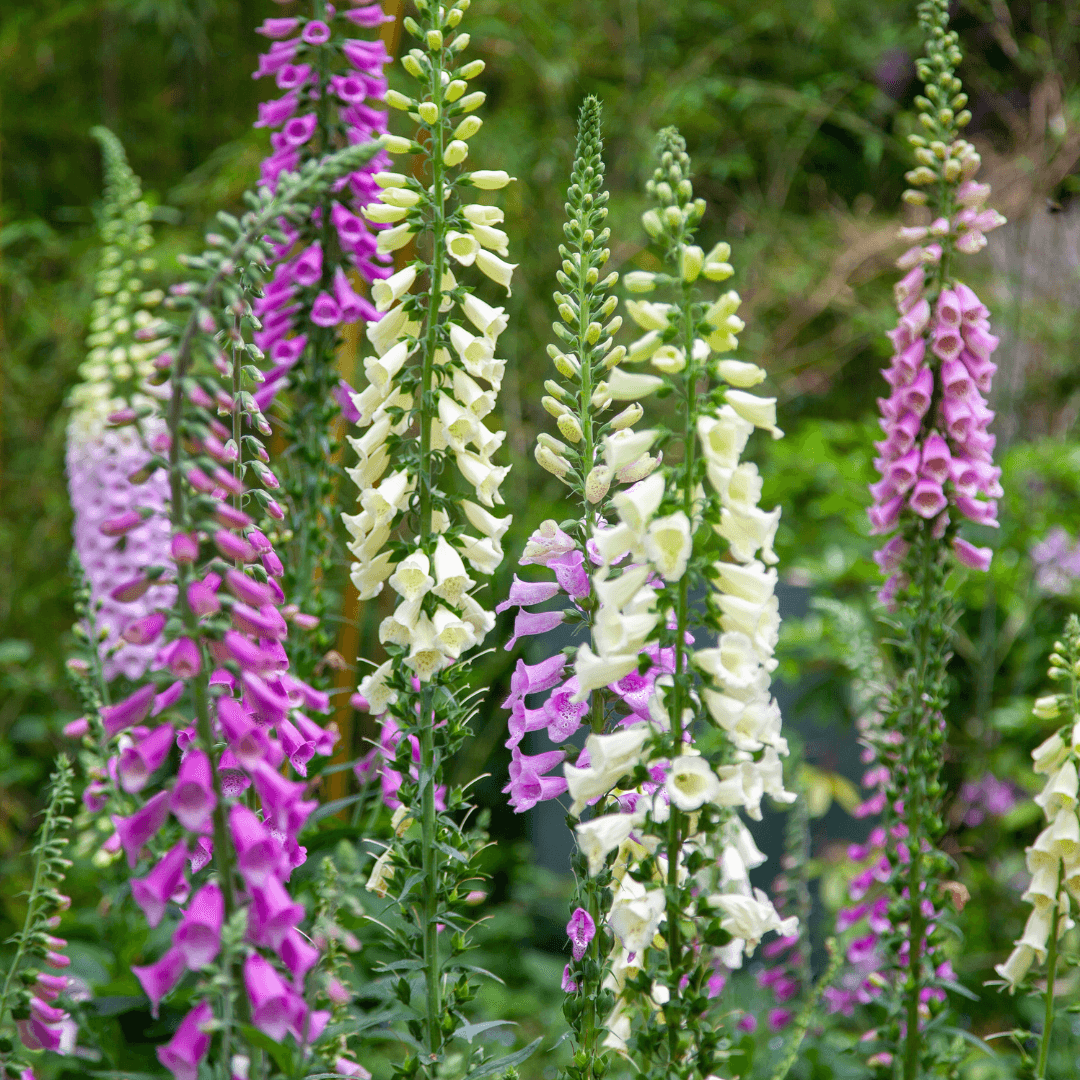
Description & Characteristics
Foxglove, also known as Digitalis, is a beautiful and unique flower that can add a touch of elegance to any shady garden. This biennial plant grows tall spikes of tubular flowers in shades of pink, purple, white, and yellow.
The leaves are large and velvety with a dark green color. One unique characteristic of foxglove is its medicinal properties.
It contains a compound called Digitalis that treats heart conditions such as congestive heart failure and atrial fibrillation. However, it's important to note that ingesting any part of the plant can be toxic and should not be consumed without medical supervision.
Varieties, Colors, & Growing Patterns
There are several varieties of foxglove available that vary in size and color. Common varieties include Excelsior Hybrid Mix (which grows up to 5 feet tall), Dalmatian Series (which has shorter stalks but produces more flowers), and Camelot Cream (which has creamy white flowers with burgundy spots).
Foxglove seeds prefer partial shade to full shade and well-drained soil. They typically bloom in late spring or early summer but can sometimes rebloom in the fall if kept well-watered during the summer months.
Foxglove Seeds
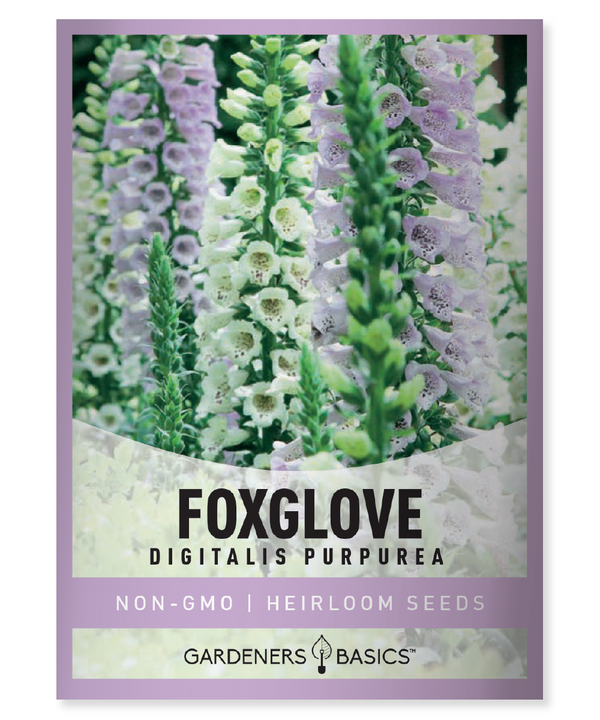
$2.49
Foxglove Seeds - Heirloom, Non-GMO, Non-Hybrid, Open-Pollinated | Stunning Biennials for Sun and Shade Gardens Grow your dream garden with our premium Foxglove seeds, offering vibrant, tubular flowers perfect for attracting pollinators like bees, hummingbirds, and butterflies. These heirloom, non-GMO,… read more
Growing Tips
When planting foxglove, it's important to space them properly because they can grow quite tall and spread out wide. They should be planted about 18 inches apart from each other.
It's also recommended to fertilize foxglove once a month during the growing season with an all-purpose fertilizer. Be sure not to over-fertilize because this can lead to weak stems and reduced blooming.
In addition, deadhead the spent blooms regularly to encourage new growth and prolong blooming time. Foxglove can also benefit from a layer of mulch around the base of the plant to help retain moisture and regulate soil temperature.
Overall, foxglove is a stunning addition to any shade garden that requires minimal maintenance but can provide maximum impact. Just handle it carefully due to its toxic properties and enjoy its beauty for years.
Hellebores: The Winter Flower
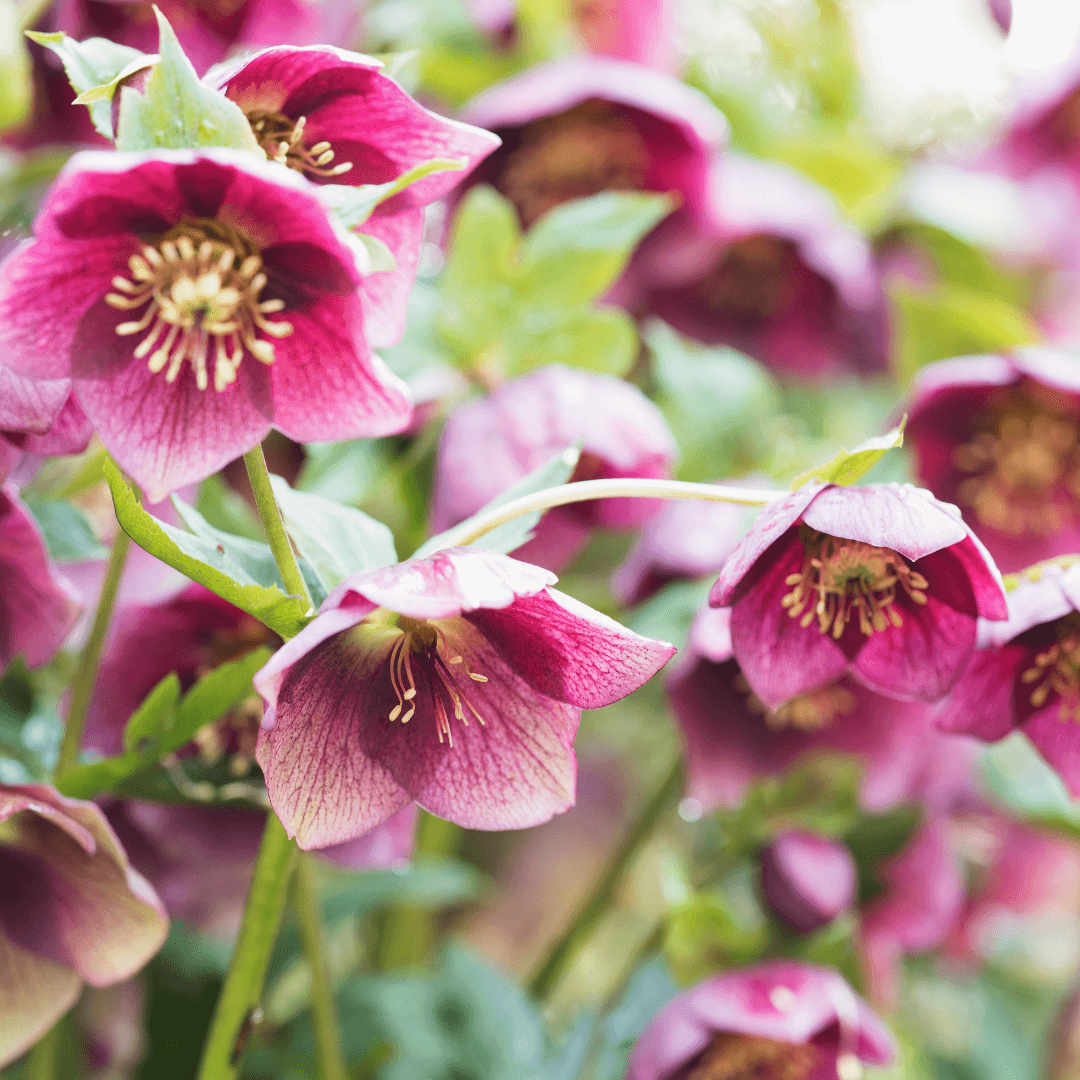
Hellebores, known as Lenten roses, are a perfect addition to any shade garden. These winter-flowering perennials bloom from January to April and come in various colors, including white, pink, red, and purple.
They also have unique foliage that remains throughout the year. One of the benefits of hellebores is their ability to tolerate dry shade.
This makes them an excellent choice for gardeners struggling to moisten their shade garden. They are also deer-resistant and generally don't suffer from many insect or disease problems.
When planting hellebores in the shade, it's important to choose a spot protected from strong winds and receiving some morning sun. They prefer well-draining soil that is rich in organic matter.
Mulching around the base of the plants will help keep their roots cool and moist during the hot summer months. In terms of maintenance, hellebores require very little attention once established.
Regular watering during dry spells is all they need to thrive. However, if you notice any damaged or diseased leaves, remove them promptly so they don't spread to healthy foliage.
Conclusion: A Beautiful Shade Garden
A beautiful and vibrant shade flower garden can be achieved with these 8 flowers that grow well in low-light conditions. From impatiens and begonias to hostas and astilbe, there are plenty of options for adding color and interest to your shady space. Consider mixing different flower heights and textures for added visual appeal when planning your shade garden layout. Planting flowers that grow in the shade is fun as some of my favorite flowers are ones that love the shade.
Don't forget about foliage plants such as ferns or heucheras that can provide year-round interest without blooming. By choosing plants well-suited for your particular growing conditions. Following basic care guidelines such as proper watering and fertilization practices, you can create a lush, thriving shade garden that will envy your neighborhood.
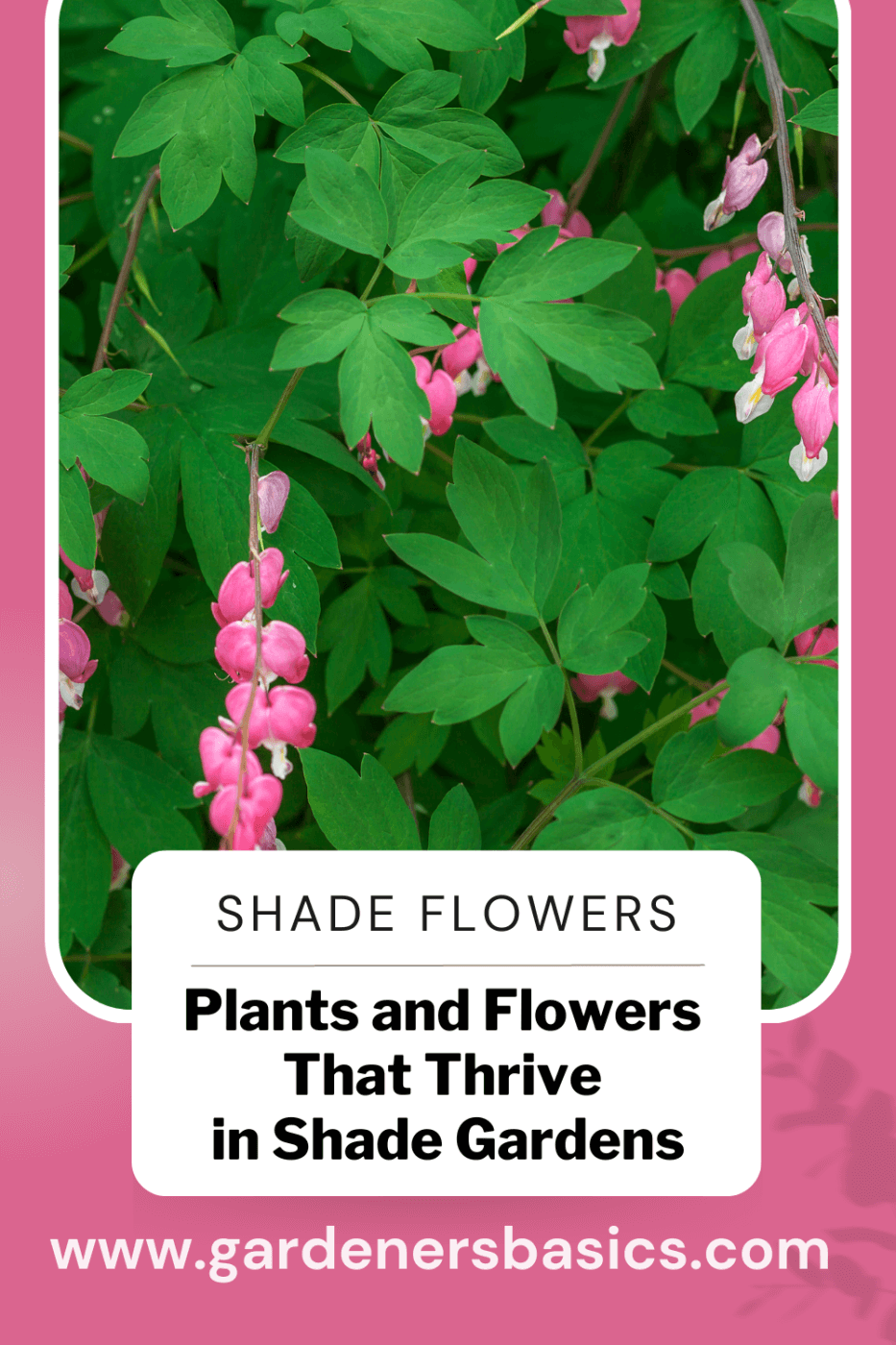 FAQ on Flowers That Grow in the Shade
FAQ on Flowers That Grow in the Shade
1. What are shade-loving flowers?
Shade-loving flowers are plant species that thrive in low-light environments or areas that don't receive direct sunlight. They are perfect for gardens with a lot of tree coverage or buildings that block the sunlight.
2. What are some examples of shade-loving flowers?
There are numerous types of shade-loving flowers. Some examples are:
- Impatiens: Known for their bright and wide range of colors, these flowers thrive in both partial and full shade.
- Begonias: They are versatile flowers and can grow both in the sun and shade. Begonias are known for their beautiful and varied flowers and foliage.
- Bleeding Hearts: These flowers are known for their unique heart-shaped flowers and are a favorite among many gardeners.
- Hostas: This plant has attractive foliage and flowers and is a common choice for shady areas.
- Astilbe: Their feathery flowers and fern-like foliage add unique texture to any shade garden.
- Columbine: These hardy, shade-loving perennials come in various colors and are beloved by hummingbirds and butterflies.
- Foxglove: They are known for their beautiful, tall spikes of bell-shaped flowers.
- Hellebore: Also known as Christmas roses, these plants bloom in late winter to early spring, bringing color to the garden when little else is in bloom.
3. How do I care for my shade-loving plants?
Shade-loving plants need the same basic care as other plants – regular watering, feeding, and pruning. However, since these plants don't get as much sunlight, they may not require as much water. It's essential to keep an eye on the moisture level of the soil and adjust watering accordingly.
4. Can shade-loving plants grow in the sun?
While some shade-loving plants, like Begonias, can tolerate some sun, most prefer shady areas. Too much direct sunlight can scorch their leaves and cause the plants to wither. Always check the specific sunlight needs of your plant.
5. Where should I plant my shade-loving flowers?
These plants can be planted under trees, on the north side of buildings, or in any area of your garden that doesn't receive direct sunlight.
6. Do shade-loving plants attract any particular insects or wildlife?
Yes, some shade-loving plants like the Columbine and Foxglove are known to attract hummingbirds and bees, respectively. It can vary, so it's best to research each plant species individually.
7. Are all shade-loving plants perennials?
No, not all shade-loving plants are perennials. For example, Impatiens and Begonias are often grown as annuals. However, many shade-loving plants, such as Hostas and Hellebores, are perennials.
8. How can I incorporate shade-loving flowers into my existing garden design?
Shade-loving flowers can be used to fill in areas under trees or along the north side of buildings where other plants may struggle. They can also be used to create a lush, layered look when paired with other shade-loving plants and shrubs.



